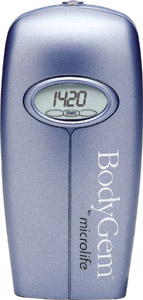The Harris Benedict Equation to calculate BMR – Basal Metabolic Rate was developed in 1919.
The first point to be made is that our bodies have certainly changed a lot since 1919, which adds more variables to the Harris Benedict Formula.
The Harris Benedict Formula shows how to calculate BMR, but this is only an estimate based on age, height and weight. Then activity level is added to estimate daily calorie intake needs.
While the Harris Benedict equation can estimate Basal Metabolic Rate, subjects of the same height and weight can vary greatly in their caloric needs.

The problem is that the Harris Benedict Calculator doesn’t factor in variables such as:
- Thyroid issues, which can reduce metabolism
- Certain hormones can increase or decrease metabolism.
- Body composition – More muscle increases metabolism, less muscle decreases metabolism
- Certain supplements can increase or decrease metabolism.
- Pharmaceuticals – Prescription and OTC drugs can increase or decrease RMR.
 Instead of estimating BMR and daily calorie intake, you can scientifically measure a clients Resting Metabolic Rate (RMR), with the BodyGem indirect calorimeter.
Instead of estimating BMR and daily calorie intake, you can scientifically measure a clients Resting Metabolic Rate (RMR), with the BodyGem indirect calorimeter.
In 5-10 minutes, you can take a snapshot of your clients Metabolic Fingerprint.
The metabolic effects of thyroid and hormone issues, body composition, and other variables, are all captured during a BodyGem measurement.
Then you can use your clients unique resting metabolic rate as the foundation of your recommendations for their daily calorie intake.
To find out more about the BodyGem indirect calorimeter, click on BodyGem